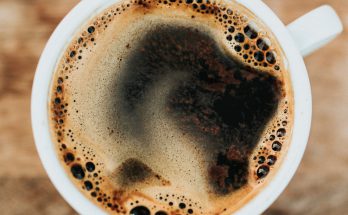Here are a few tips to help you feel more like a chef than a disaster in the kitchen.
Start Here
Begin by scrutinizing everything that touches your food. Eliminate plastic, except for a few disposable travel containers. Use glass for freezing leftovers and storing in the fridge or pantry. I use Pyrex containers in many shapes and sizes because they can go from freezer or fridge to oven without breaking. (Let things thaw or place in a cold oven, then turn on the heat.)
Pyrex glass comes with plastic lids, but you can make sure the food does not touch the plastic during storage by not overfilling. I dedicate a deep drawer for the glass and a shallow drawer for the lids.
Advanced Placement
Since we’re excommunicating all plastic, this will include Teflon or other coated pans that “require” plastic ladles and spatulas that won’t scratch the plastic coating. Instead, we can advance to steel spoons, ladles, and spatulas that are metal or wooden, sturdy and long-lasting.
Use steel or wooden implements with a sturdy cast iron pan and wood with your stainless steel pans. Strategically place one beautiful, large ceramic jug next to your stove (mine is blue-green) to hold your wooden implements.
Magnetic Attraction
Hang a magnetic knife strip on your wall for steel implements and large knives. I have two strips, to save counter space and hang all my steel ladles, spoons, and the knives. You’ll make the kitchen look professional.
What’s in the Pot
Get one, high-quality mid-sized or large Dutch oven in a color you love. Purchase one or two stainless steel pots and pans with multiple layers. Thick, high quality pots can do anything, including melt chocolate without the use of a double boiler. (I have several chef pro-grade, seven-layered pots and pans by Demeyere, and I use them daily.)
These are thick enough and distribute heat well enough to not burn the goods. (Tip: Don’t use high heat when melting chocolate;go low and slow.) A porcelain crock pot is a great way to cook if you aren’t home all day. Plug it in, add meat, vegetables, sea salt and some water or soup stock and you have stew for dinner when you get home.
Butter is Better
I suggest using silicone spatulas to scrape out foods that have cooled off and to minimize waste, food, and fat left over in a glass dish or stainless pan.
Line cheap “non-stick” cookie sheets with unwaxed parchment paper. Otherwise try to use glass, clay (terra cotta), “stone,” or porcelain where possible for baking. Again, you do not want cheap, “non-stick” plastics touching your food. My “non-stick” strategy is to use more butter.
Storage Space
Keep oven thermometers near your oven mitts, in a drawer next to the stove and at the ready for when you pull out and check roasts. Dutch oven lids are heavy, so store them together with their respective pot. Use a vertical lid organizer to stand any other pot lids on their sides to make room for other items
ABCs
Store your most used cooking utensils and pots nearest the stove and perishables away from the heat of the stove and oven, not right above them. This includes spices. I have a rotating rack and actually alphabetize my spices so that I can find them. Believe me, I am not this organized in any other part of my life, but alphabetizing my spice rack has cut down significantly on food prep time!
Knives Over Forks
Butchers and chefs sharpen (or at least hone with a honing rod) their knives before EACH use. This makes it much easier to cut meat and vegetables in a short amount of time and with ease. Purchase one to three high quality knives of varying sizes and keep them sharp. It makes chopping a pleasure instead of a pain. Let those cheap knives go.
Have Board, Will Travel
A high quality, sharp knife calls for a high quality, wooden cutting board. I use the back side of a wooden carving board for my garlic and onions, to keep those flavors to that side of that board. The highest quality handmade boards do not use synthetic glues in their boards.
I travel with my own knives, a Demeyere frying pan, a wooden cutting board, and sea salt, whether by plane, train, or car, to upgrade my vacation cooking.
Nutrient Density = High Quality
People like to stock their pantries in case of an outage or a shortage. Focus on nutrient density, which essentially means high quality: organic nut butters, jerky, nuts and seeds, crackers, coarse and fine sea salt (or Himalayan or Redmond’s salt from Utah), chocolate (very important), organic flours, and other non-GMO baking ingredients.
Keep both salted and unsalted butter fresh by storing it in your freezer, taking it out as needed.
Spoiled Oils
Meanwhile, ditch the factory-made “vegetable” seed oils like canola, safflower, sunflower, soy. They are already oxidized before they are bottled. Stick to butter, ghee, and tallow from pastured cows, and organic olive, coconut, and avocado oils.
If you are going to buy in bulk and have the space, load up on the good stuff. Don’t get 24 jars of crappy mayo (with inflammatory safflower or canola oils) just because it’s the deal of the week. Select a high-quality mayo (using olive or avocado oils), salmon, tuna and sardines canned in spring water. Then, if there’s no Armageddon, you can cycle the canned stuff out on a picnic or a road trip.
How to Improve Your Kitchen Slowly and Affordably
So if you have cheap utensils that won’t elevate your cooking, and if you have food in your pantry that won’t nourish your family, then it’s time for an upgrade. Start with one category, declutter and upgrade, then move to the next until you have a complete pantry overhaul that reflects the high quality, culinary pleasure, visual joy you have been searching for. Investing in high quality kitchen equipment will give you the added bonus of feeling like a chef every day!
Microwaved
One last tip: Would it be blasphemous to recommend that you ditch your microwave? You are now equipped for real cooking. Use your oven, toaster oven or Dutch oven to reheat goodies. Microwaved anything is so last century. And health does not come from food zapped on high settings in 30-second intervals. Cooking from scratch generally saves money too – which you can put towards some of that high end cookware! Go ahead and ditch that thing.
This story contains some affiliate links that may pay us a tiny commission if you decide to buy something through them. If so, thanks for supporting the Taffeta community.



